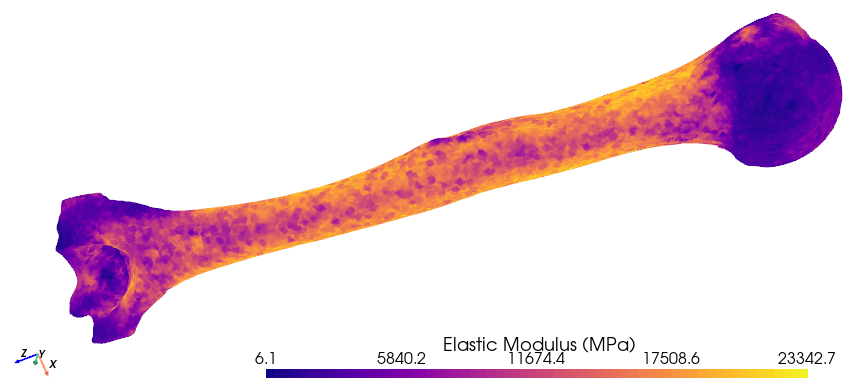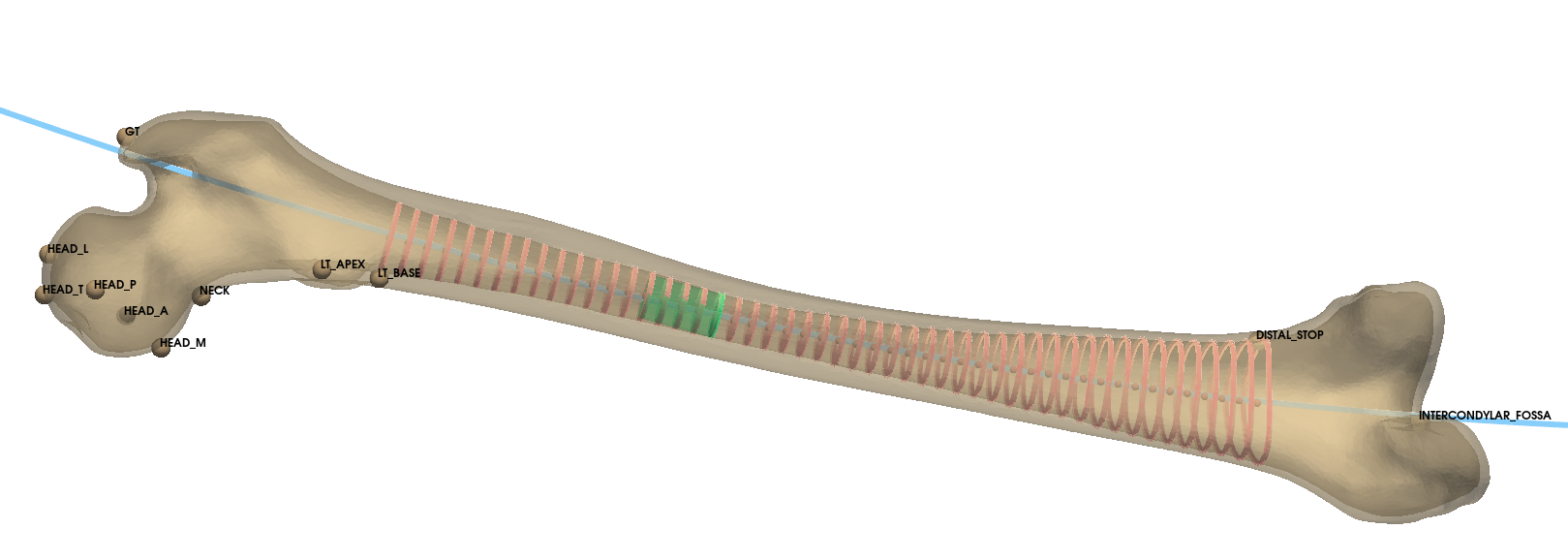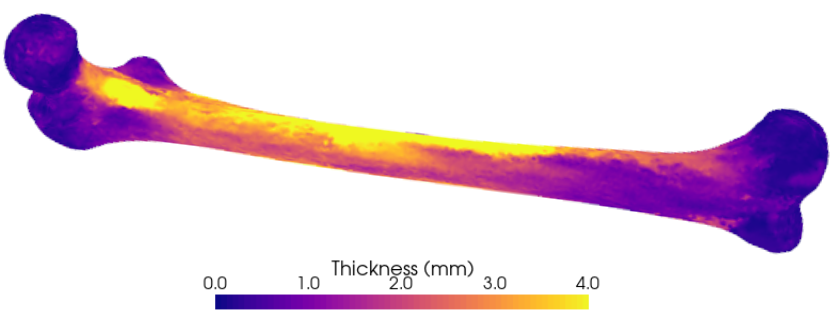
As a Research and Innovation Engineer at LimaCorporate (now Enovis), a global medical device company, I have developed Figura™, a system for research and development of orthopedic implants consisting of three components:
-
Bone database – hundreds of anonymized CT image sets and more than 2,400 3D bone models.
-
Open source-based library – which leverages machine learning, statistical shape modelling (SSM), and optimization techniques to automate time-consuming and otherwise expensive tasks, for instance:
- mapping elastic properties derived from computed tomography images to a bone finite element mesh (QCT-FEA),
- inner cortical segmentations (cortical bone mapping),
- bone morphometric analyses (femur, humerus, scapula, talus, tibia, and ulna).
The library is mainly written in Python, and leverages also Scala for SSM, and HTML/CSS for the documentation. Procedural, object-oriented, and functional programming paradigms are used throughout the codebase. It is version controlled using Git and stored in Azure DevOps repositories where I have implemented CI/CD pipelines for testing and linting.
-
CAD plug-ins – to automate virtual surgeries and bone reconstructions within the CAD environment.
The system empowers product development engineers with data and tools to make their design activities more effective and efficient. Furthermore, the tool was used and cited in a peer-reviewed research article published in the Journal of Orthopaedic Research (Q1) and in projects presented at orthopaedic conferences, such as the ISTA.
Moreover, I have developed several graphical user interfaces (GUIs) that leverage Figura, as well as PyQt5, PyQtGraph, and PyVista libraries, for processing, visualizing, and interacting with complex 2D and 3D data. I have bundled these GUIs and released them to my colleagues at work to facilitate their day-to-day engineering activities. For instance, one of these GUIs allows the product development engineers to perform QCT-FEA analyses on their own, while another one enables 2D surgery planning.
 QCT-FEA. Humerus elastic modulus map.
QCT-FEA. Humerus elastic modulus map.
 Morphometric analysis. Femur diaphysis.
Morphometric analysis. Femur diaphysis.
 Cortical bone mapping. Femur cortical thickness.
Cortical bone mapping. Femur cortical thickness.